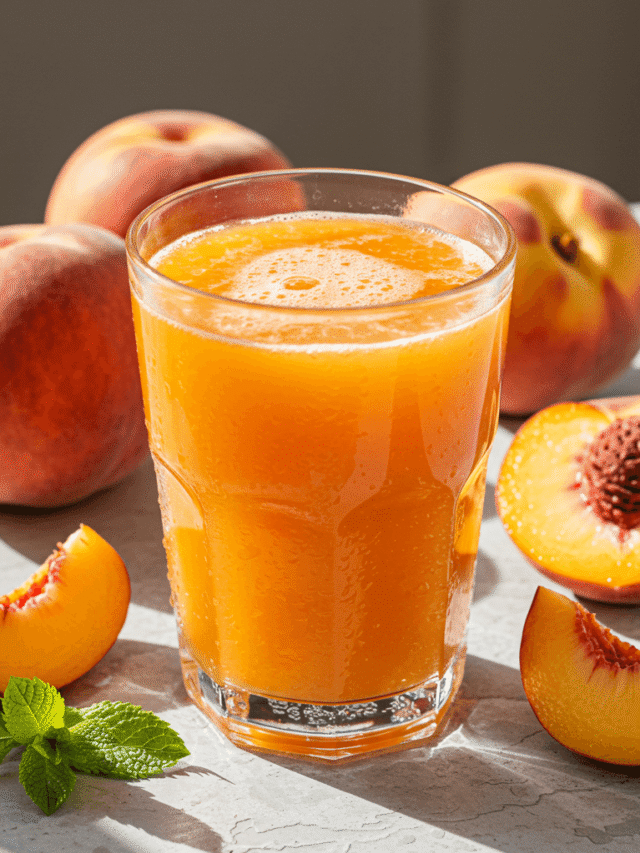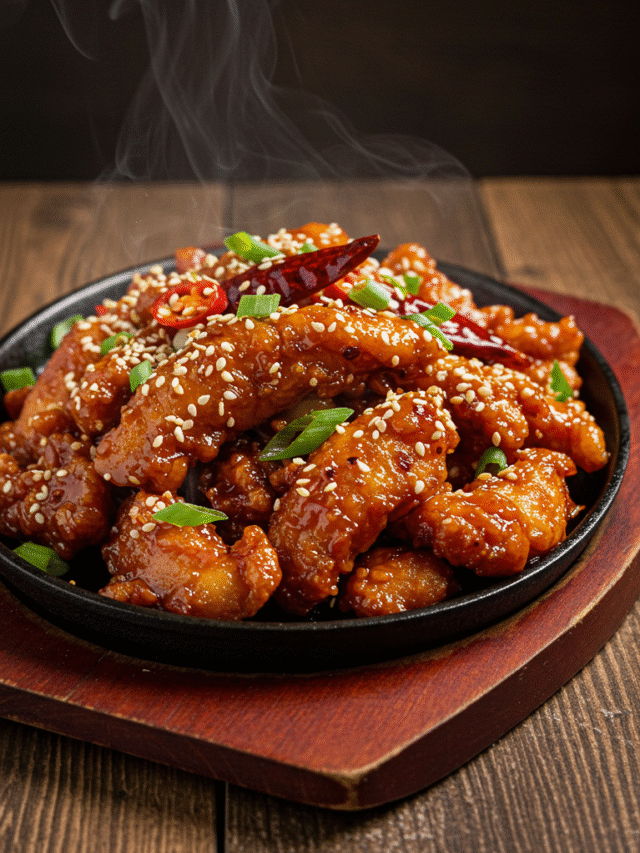Introduction to White Grape Juice
White grape juice stands as a popular beverage choice for many people across the world. This refreshing drink comes from pressing green or yellow grapes, creating a clear, sweet liquid that many enjoy daily. Unlike its purple counterpart, white grape juice offers a milder flavor profile that appeals to both children and adults.
Americans drink millions of gallons of white grape juice every year. The market continues to grow as more people discover its pleasant taste and potential health benefits. This juice contains natural antioxidants that may support heart health and overall wellness when consumed as part of a balanced diet.
The popularity of white grape juice stems partly from its versatility. You can drink it plain, mix it into smoothies, or use it as a base for other beverages. Many parents choose white grape juice as a healthier alternative to sodas and artificial drinks for their children.
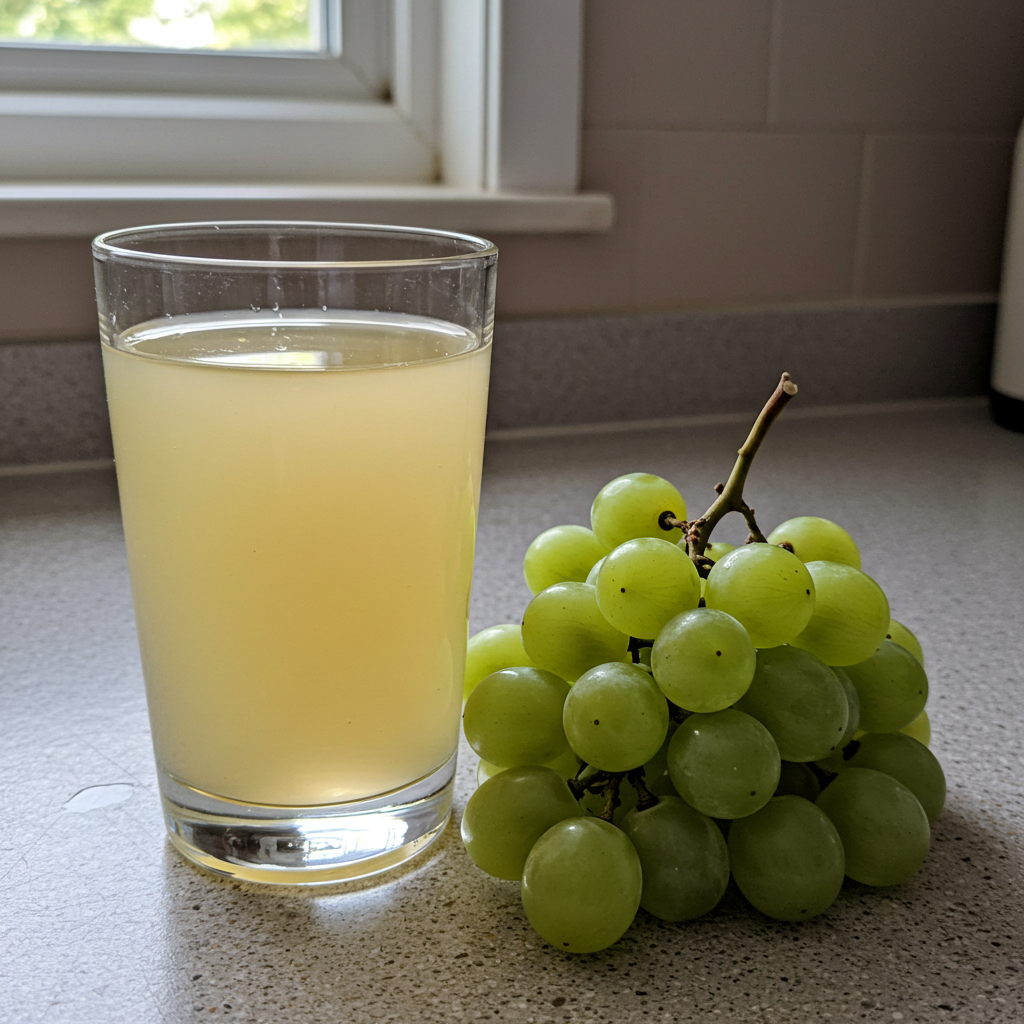
What Is White Grape Juice?
The Origins
This light, sweet juice has a history dating back centuries. Ancient civilizations pressed grapes for their liquid well before discovering fermentation. The Romans and Greeks valued it for both flavor and nutrition.
Modern production began in the 19th century when Dr. Thomas Welch developed a pasteurization process in 1869. Today, the most common varieties used are Niagara and Thompson Seedless, along with other green grapes grown globally.
How It’s Made
Creating this juice involves several steps:
- Harvesting ripe, light-colored grapes
- Washing and sorting
- Crushing to extract the liquid
- Filtering to remove skins, seeds, and pulp
- Pasteurizing for safety and longer shelf life
- Bottling for sale or storage
Some manufacturers concentrate the juice to reduce shipping volume. At home, juice can be made fresh using simple presses, especially during grape harvest season. The result is a fresh, natural drink that differs in taste from store-bought versions.
What gives it that golden color and smooth texture? It’s the combination of pale grape varieties and removing all skins during production. This results in a milder taste many prefer over darker alternatives.
Its subtle flavor also makes it a popular base for juice blends, even when not labeled prominently. You’ll often find it paired with other fruits or used as a natural sweetener in health-conscious recipes.
Comparing to Other Varieties
The pale hue of this juice sets it apart from red or purple versions. Darker types retain grape skins during processing, adding both color and bold flavor.
Visually, it often resembles apple juice but has a slightly thicker consistency and clearer appearance. The taste, however, is uniquely grape — mellow, refreshing, and naturally sweet.
White Grape Juice vs. Other Grape Juices
Color Differences
This pale juice stands apart visually from red and purple varieties. Its clear, golden hue comes from using green or yellow grapes and removing the skins during processing. In contrast, darker juices retain skins during pressing, resulting in a bolder color and deeper flavor.
Many people notice it resembles apple juice at first glance. However, the texture is usually slightly thicker and the clarity higher, making it easy to distinguish by sight and taste.
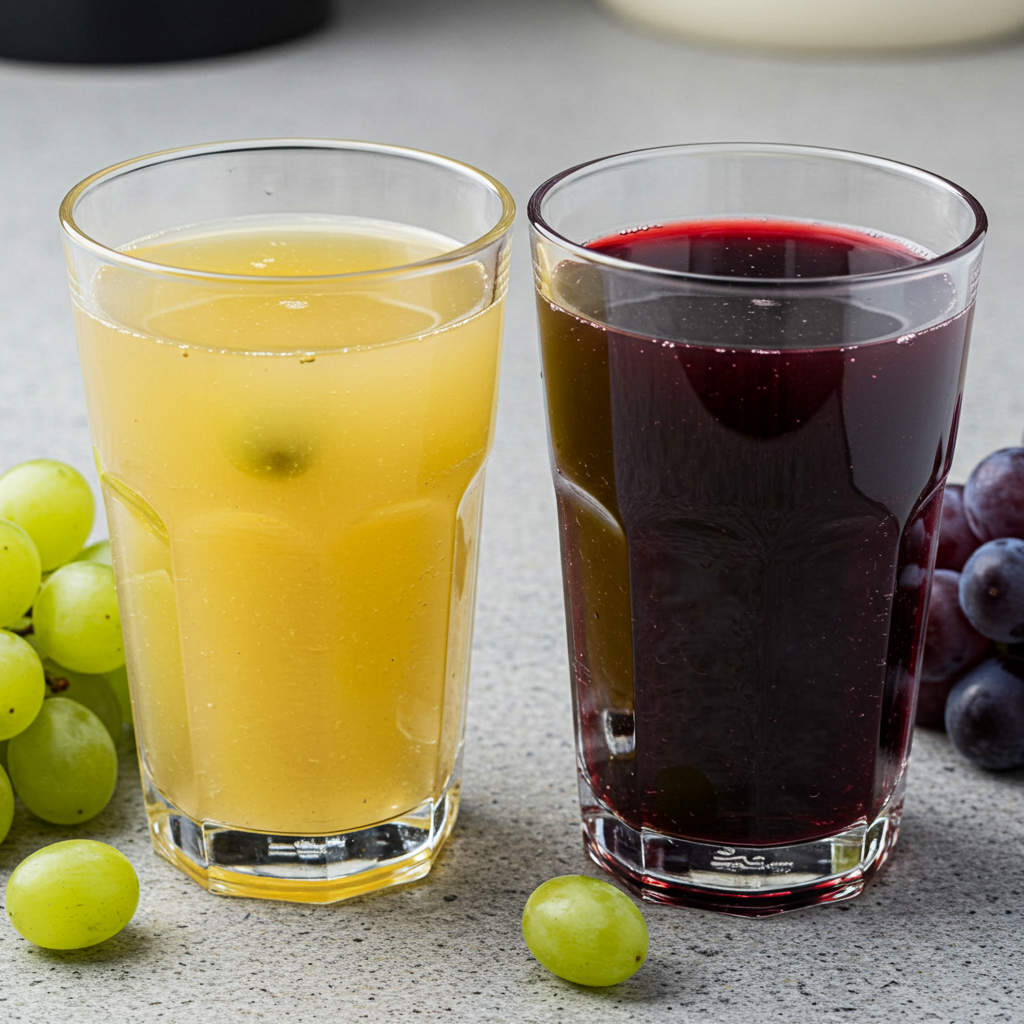
Taste Profile Comparison
The flavor is milder and sweeter than that of red or purple grape juices. Most describe it as:
- Light and refreshing
- Less tangy
- Naturally sweet with honey-like notes
- Subtly floral
- Clean, smooth finish
Its gentle taste often makes it a favorite among children, who may find the bolder grape flavors too intense or slightly bitter. These differences stem from grape varieties and production techniques.
Adults appreciate its versatility in cooking and cocktails. The mildness pairs well with other ingredients, making it a common choice as a natural sweetener in mixed drinks.
Nutritional Differences
Although both pale and dark grape juices offer natural sugars and vitamins, they differ in antioxidant content. Purple versions contain anthocyanins, giving them strong antioxidant properties and their deep color. Lighter juices, on the other hand, contain flavonols, which offer different health benefits.
In terms of calories and sugar, both types are similar—about 160 calories and 38–40 grams of sugar per cup. Neither usually contains added sugars, thanks to the fruit’s natural sweetness.
Nutritional highlights include:
- Quick-energy fruit sugars
- Small amounts of potassium, calcium, and B vitamins
- Fat-free and protein-free
- Often fortified with 100% daily vitamin C
The lighter juice is often preferred for its non-staining quality—ideal for kids or for drinking on the go. It won’t leave marks on clothes, carpets, or teeth like darker juices can.
When buying, look for 100% pure juice. Avoid “juice drinks” that may contain added sweeteners or artificial ingredients to ensure you’re getting the best nutritional value.
Nutritional Profile of White Grape Juice
Key Nutrients and Vitamins
White grape juice contains several important nutrients that can help support your overall health. This popular drink gives you a quick source of natural energy through its fruit sugars while also providing various vitamins and minerals.
The main nutrients you’ll find in a typical 8-ounce serving of white grape juice include:
- Vitamin C – supports immune function
- Potassium – helps maintain healthy blood pressure
- Manganese – assists with metabolism
- Small amounts of calcium and iron
- Natural plant compounds called polyphenols
Most store brands of white grape juice don’t contain significant amounts of fiber. The juice-making process removes the skin and pulp, which hold most of the fiber from the original fruit. Some manufacturers add vitamin C to their products during processing to boost the nutritional value.
White grape juice also contains various antioxidants that help fight free radicals in your body. These natural compounds work to reduce oxidative stress and support cellular health.
Caloric Content and Sugar Levels
People watching their calorie intake should know about the sugar content in white grape juice. A standard 8-ounce glass contains:
- About 160 calories
- Approximately 38-40 grams of sugar
- Zero grams of fat
- Zero grams of protein
- No sodium or cholesterol
The sugar in white grape juice comes naturally from the grapes themselves. Most commercial brands don’t add extra sweeteners because grapes already contain high amounts of natural sugars. These sugars include glucose and fructose, which your body absorbs quickly.
The glycemic index of white grape juice ranks moderately high. This means it can raise blood sugar levels fairly rapidly after drinking. People with diabetes or those managing their blood sugar should drink it in small amounts or dilute it with water.
Health-Conscious Consumption
Most health experts suggest limiting juice consumption to small servings due to the high sugar content. The American Academy of Pediatrics recommends:
- Adults: No more than 8 ounces (1 cup) daily
- Children ages 7-18: No more than 8 ounces daily
- Children ages 1-6: No more than 4-6 ounces daily
- Infants under 12 months: No fruit juice at all
You can make white grape juice more health-friendly by:
- Diluting it with water to reduce sugar content
- Drinking it with a meal to slow sugar absorption
- Choosing 100% juice with no added sweeteners
- Treating it as an occasional treat rather than a daily beverage
Many nutrition experts suggest eating whole grapes instead of drinking juice when possible. Whole grapes give you fiber and require chewing, which helps you feel more satisfied than drinking juice alone.
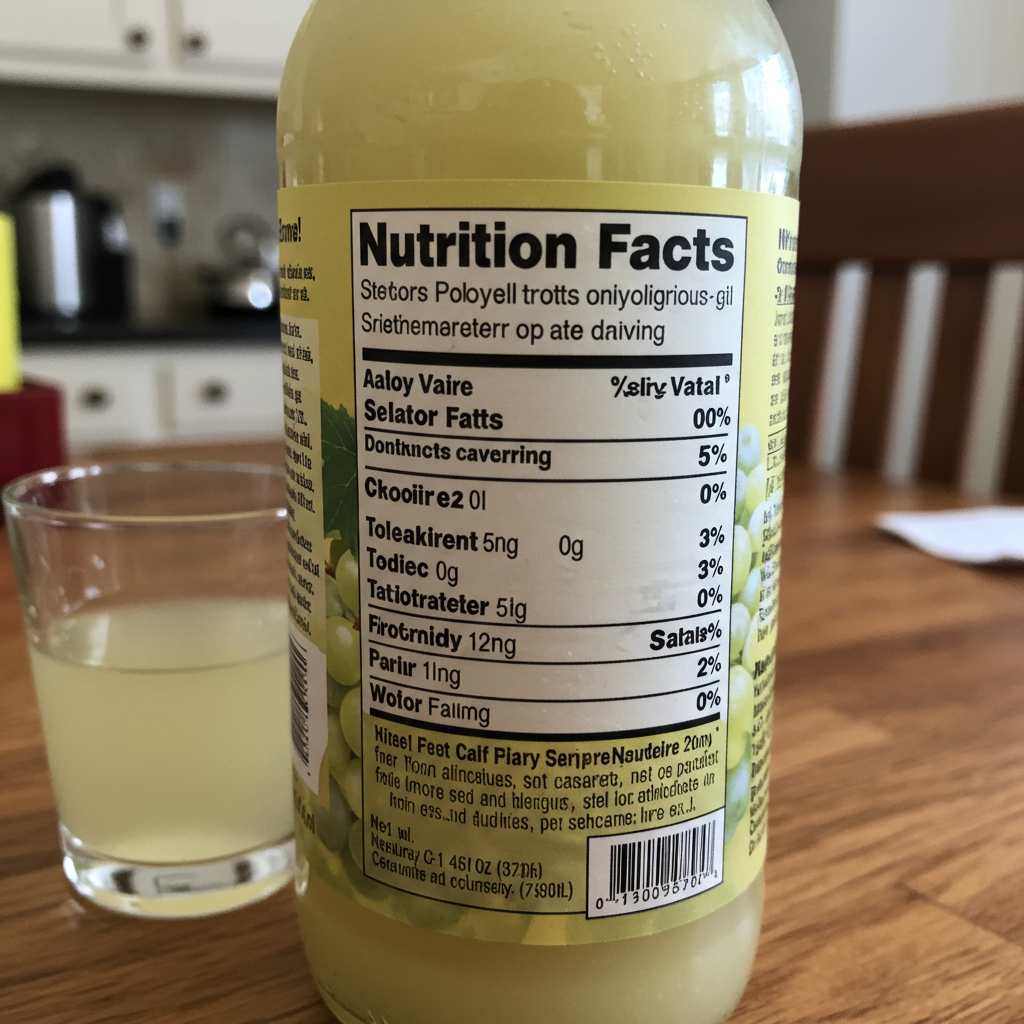
Health Benefits of White Grape Juice
Antioxidant Properties
White grape juice contains powerful plant compounds that fight harmful free radicals in your body. These natural substances, called polyphenols, help reduce oxidative stress and inflammation.
The main antioxidants in white grape juice include:
- Flavonoids – support heart health
- Resveratrol – promotes healthy aging
- Catechins – help protect cells
- Quercetin – supports immune function
- Proanthocyanidins – maintain blood vessel health
Though white grape juice has fewer antioxidants than red or purple varieties, it still offers meaningful health benefits. The lighter color means it contains different types of antioxidants, not necessarily fewer overall benefits.
Regular consumption of grape antioxidants might help lower your risk of certain chronic conditions. These natural compounds work best when you consume them as part of a healthy diet with plenty of other fruits and vegetables.
Heart Health Benefits
White grape juice may support your heart in several ways. Research shows that drinking it regularly might:
- Help maintain healthy blood pressure
- Support good cholesterol levels
- Improve blood flow
- Reduce inflammation in blood vessels
- Lower oxidative stress on the cardiovascular system
The flavonoids in white grape juice help your blood vessels stay flexible and responsive. This improved function allows for better circulation throughout your body, which supports overall heart health.
Many heart experts suggest that moderate consumption of grape products benefits your cardiovascular system. The natural compounds in grapes appear to work together in ways that isolated supplements cannot match.
Other Potential Benefits
Beyond heart health, white grape juice might offer additional benefits:
- Immune system support from vitamin C
- Improved digestion as a mild natural laxative
- Better hydration due to high water content
- Relief from minor constipation
- Protection against certain types of cellular damage
Some people drink white grape juice before medical procedures. Doctors often recommend clear liquids like white grape juice before surgery because your body digests it quickly, and it leaves no colored residue in your digestive system.
Athletes sometimes choose white grape juice for quick energy before or during workouts. The natural sugars provide fast fuel, while the antioxidants might help reduce exercise-induced stress on the body.
Research continues on how grape compounds affect brain health and cognitive function. Early studies suggest these natural substances might help maintain brain health as we age, though scientists need to conduct more research.
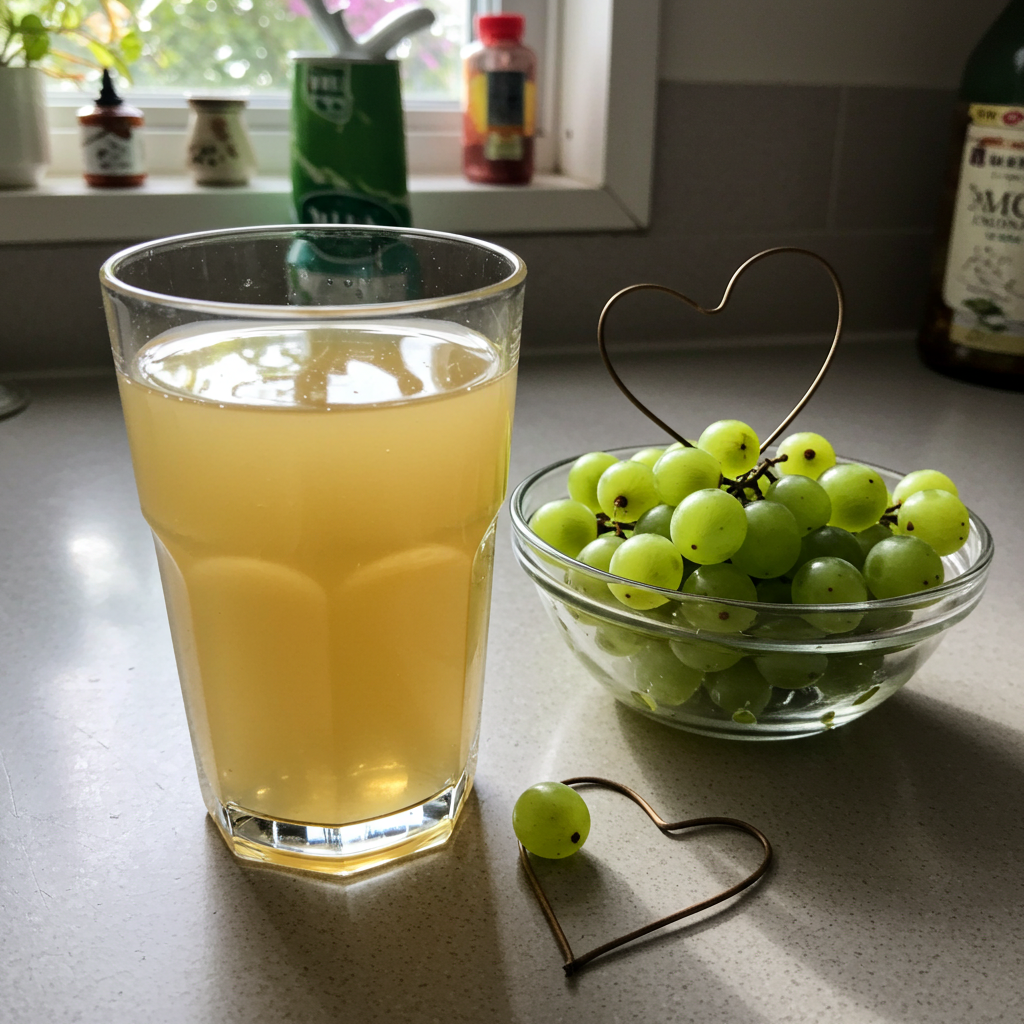
Medical and Practical Uses
Pre-Surgery Protocol
Many doctors recommend white grape juice as part of their pre-surgery instructions. This clear liquid works well during the critical preparation period before medical procedures.
White grape juice makes an ideal pre-surgery drink because:
- It counts as a clear liquid
- Your body digests it quickly
- It leaves no colored residue in your digestive tract
- It provides quick energy through natural sugars
- It hydrates you while fasting from solid foods
Patients often receive instructions to drink clear liquids only for 8-24 hours before surgery. White grape juice fits this requirement perfectly, unlike purple grape juice that could stain the digestive tract and complicate visual exams.
Most surgery centers include white grape juice on their approved clear liquid lists. The sugar content helps maintain your blood glucose levels during pre-surgery fasting, which prevents some complications.
Digestive Applications
White grape juice works as a mild natural laxative for many people. The fruit sugars and specific compounds in grapes gently stimulate digestive movement.
People use white grape juice for digestive health in these ways:
- Drinking a small glass to relieve mild constipation
- Using it as part of a gentle cleanse
- Adding it to their diet during recovery from digestive issues
- Including it in children’s diets for natural regularity
The mild laxative effect comes from the natural fruit sugars and certain plant compounds in grapes. These components draw water into the intestines and stimulate muscle contractions that move waste through your system.
For children with constipation, many pediatricians suggest small amounts of white grape juice as a natural remedy. The sweet taste makes children more willing to drink it compared to other digestive aids.
Other Therapeutic Applications
Beyond surgery prep and digestive health, people use white grape juice for:
- Hydration during mild illnesses
- Recovery drinks after physical activity
- Mixing with medications that need liquid
- Part of clear liquid diets for medical conditions
- Gentle nutrition during stomach upsets
The electrolytes in white grape juice help replace what your body loses during illness or exercise. Potassium, in particular, supports proper muscle and nerve function during recovery.
Some people find that white grape juice soothes a sore throat when warmed slightly. The smooth texture coats irritated tissues, while the natural sugars provide comfort.
For those who struggle to take medications in pill form, white grape juice masks bitter tastes better than water. Many parents use small amounts to help children take necessary medicines more easily.
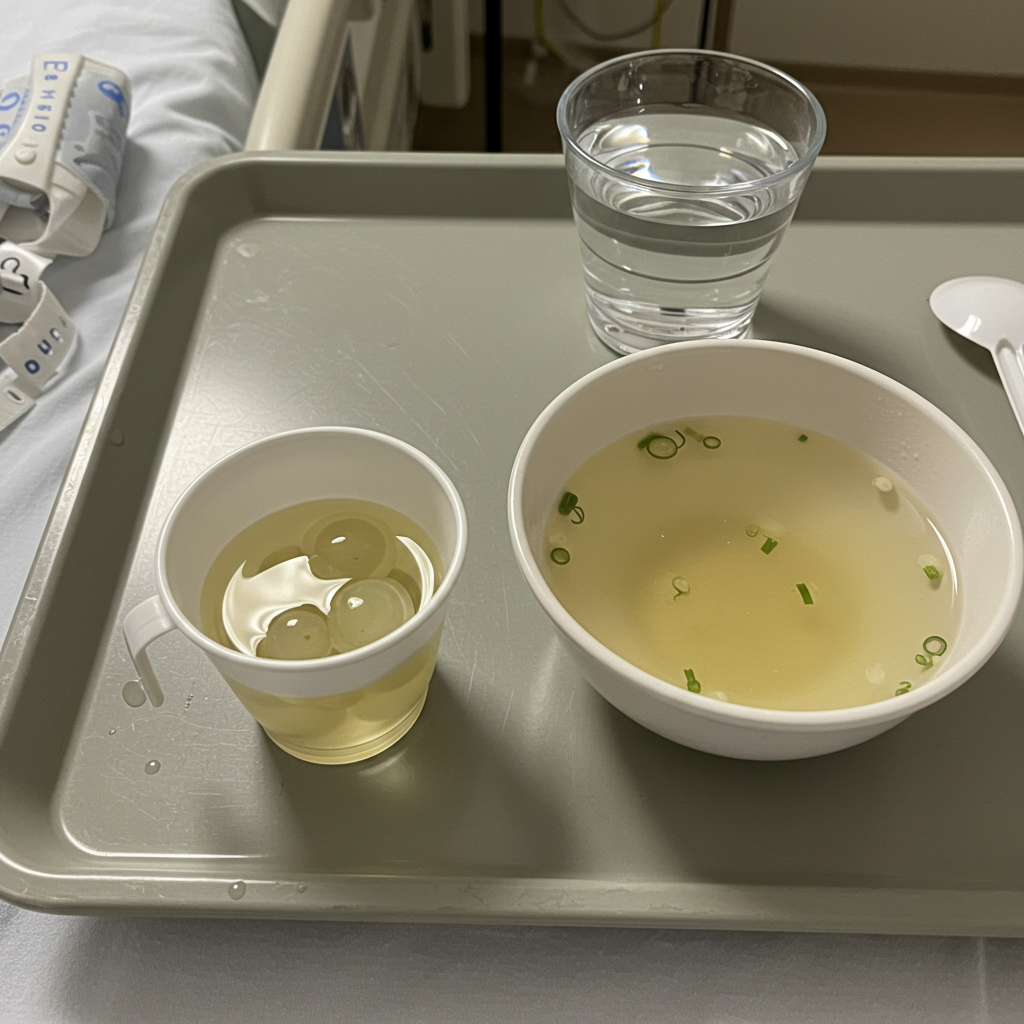
White Grape Juice in Popular Beverages
Commercial Beverages
Many companies use white grape juice as an ingredient in their products. The mild flavor and natural sweetness make it perfect for blending with other fruits and flavors.
You’ll find white grape juice in these common products:
- Fruit punch drinks
- Mixed fruit juices
- Children’s juice boxes
- Sparkling fruit beverages
- Natural sodas and seltzers
Manufacturers often add white grape juice to other juices that need sweetness without changing their color or flavor profile. For example, cranberry juice often contains white grape juice to balance its tartness.
Many “100% juice” products for children contain mostly white grape juice with small amounts of other fruit juices for flavor. The label might say “berry blend” or “fruit punch,” but white grape juice often makes up the majority of the liquid.
Health food companies prefer white grape juice as a natural sweetener in beverages. The juice adds sweetness without using refined sugar or artificial sweeteners, which appeals to health-conscious shoppers.
Starbucks and Coffee Shop Uses
White grape juice appears in several popular coffee shop drinks, especially at Starbucks. The major coffee chain uses it in many of their refresher beverages and fruit-based drinks.
Starbucks uses white grape juice in:
- Strawberry Açaí Refreshers
- Mango Dragonfruit Refreshers
- Kiwi Starfruit Refreshers
- Pink Drink and similar beverages
- Some seasonal fruit drinks
The grape juice base adds sweetness and body to these drinks without overpowering the main flavors. Most customers don’t realize grape juice creates part of the flavor profile they enjoy.
Coffee shops blend white grape juice with tea, fruit pieces, and ice to create refreshing summer drinks. The neutral flavor works well with bold fruit tastes and doesn’t compete with them.
Independent cafes often create their own fruit drinks using white grape juice as a base ingredient. The versatile juice pairs well with herbs like mint or basil for signature menu items.
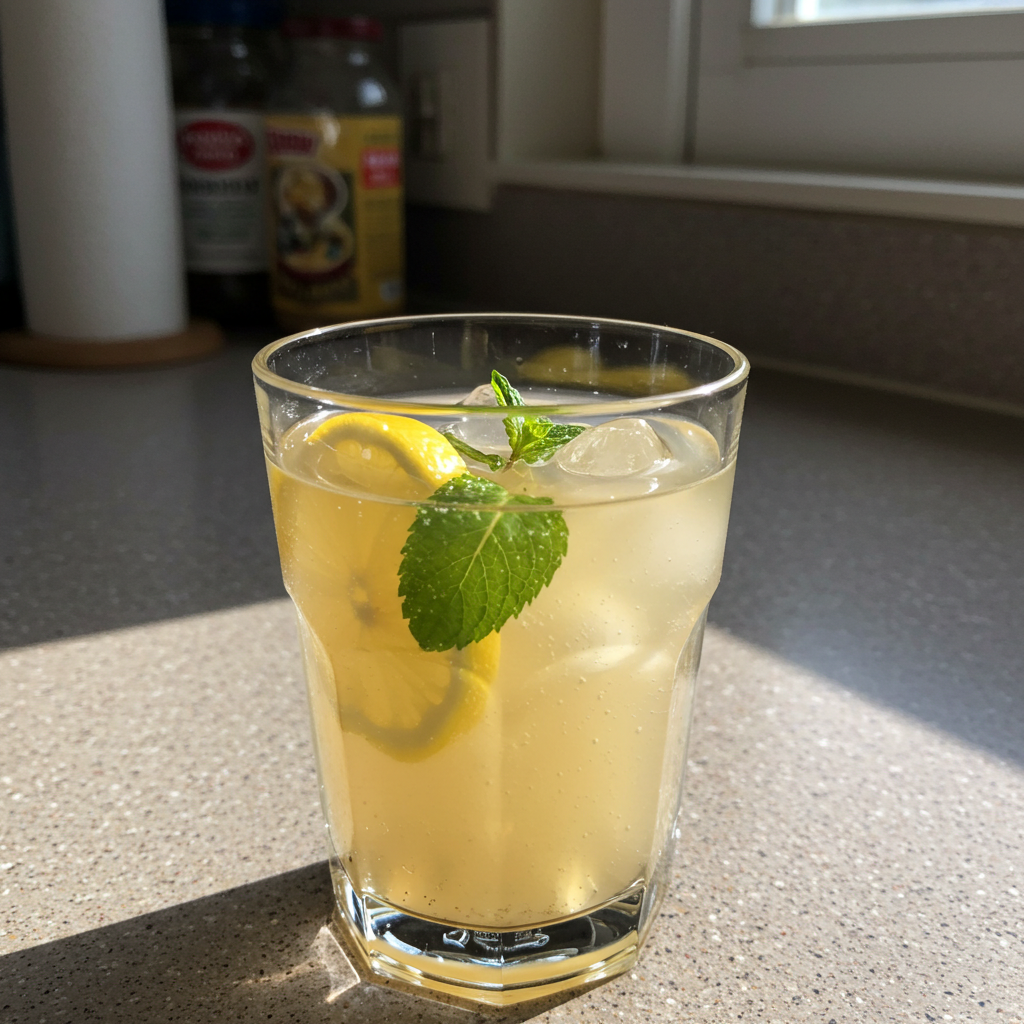
Cocktails and Mocktails
Bartenders and mixologists use white grape juice to create delicious drinks. The sweet flavor and smooth texture blend well with both alcoholic and non-alcoholic ingredients.
Popular cocktails with white grape juice include:
- White Grape Martini
- Grape Mojito
- Sparkling Grape Spritzer
- Frozen Grape Daiquiri
- Wine-free Sangria
For mocktails, white grape juice creates sophisticated alcohol-free options. When mixed with seltzer water, fresh fruit, and herbs, it makes drinks that feel special without alcohol.
Home bartenders like using white grape juice because it mixes well and tastes good with many spirits. Unlike cranberry or orange juice, it doesn’t overpower delicate liquors like vodka or white rum.
The natural sweetness in white grape juice means you need less added sugar in your drinks. This makes grape-based cocktails slightly healthier than options that need simple syrup or sugar.
Buying and Storage Guide
What to Look for When Buying
Picking the right white grape juice makes a big difference in taste and nutrition. Smart shoppers check these details before they buy:
- Ingredient list – look for “100% juice” on the label
- Sugar content – avoid brands with added sugars
- Organic options – fewer pesticides than conventional juice
- Glass bottles – better taste than plastic containers
- Production date – fresher juice tastes better
- Color – should look clear gold, not cloudy
- Price comparison – store brands often match name brands in quality
The best white grape juice contains just one ingredient: grape juice. Many cheaper products list “juice cocktail” or “juice drink” on the label, which means they contain less real juice and more added sugar or water.
Some shoppers prefer organic grape juice because grapes rank high on lists of fruits with pesticide residue. Organic options cost more but contain fewer chemicals from the growing process.
The packaging affects taste and shelf life. Glass bottles keep white grape juice fresher longer than plastic jugs or cartons. The juice stays good longer and keeps more of its natural flavor in glass.
Storage Best Practices
Proper storage keeps your white grape juice fresh and tasty. Follow these tips to maintain quality:
- Keep unopened juice in a cool, dark cabinet
- Store opened juice in the refrigerator
- Use within 7-10 days after opening
- Freeze juice in ice cube trays for longer storage
- Transfer from cartons to glass containers for better freshness
- Keep away from strong-smelling foods in the fridge
White grape juice absorbs odors easily. Store it away from onions, garlic, and other strong-smelling foods in your refrigerator. This keeps the delicate flavor pure and clean.
Temperature changes hurt juice quality. Don’t leave white grape juice in a hot car or in direct sunlight. Heat breaks down the flavor compounds and vitamins in the juice.
Some people freeze white grape juice in ice cube trays then use the cubes in smoothies or to chill other drinks without diluting them. The frozen cubes keep for about three months before the flavor starts to fade.
Shelf Life Information
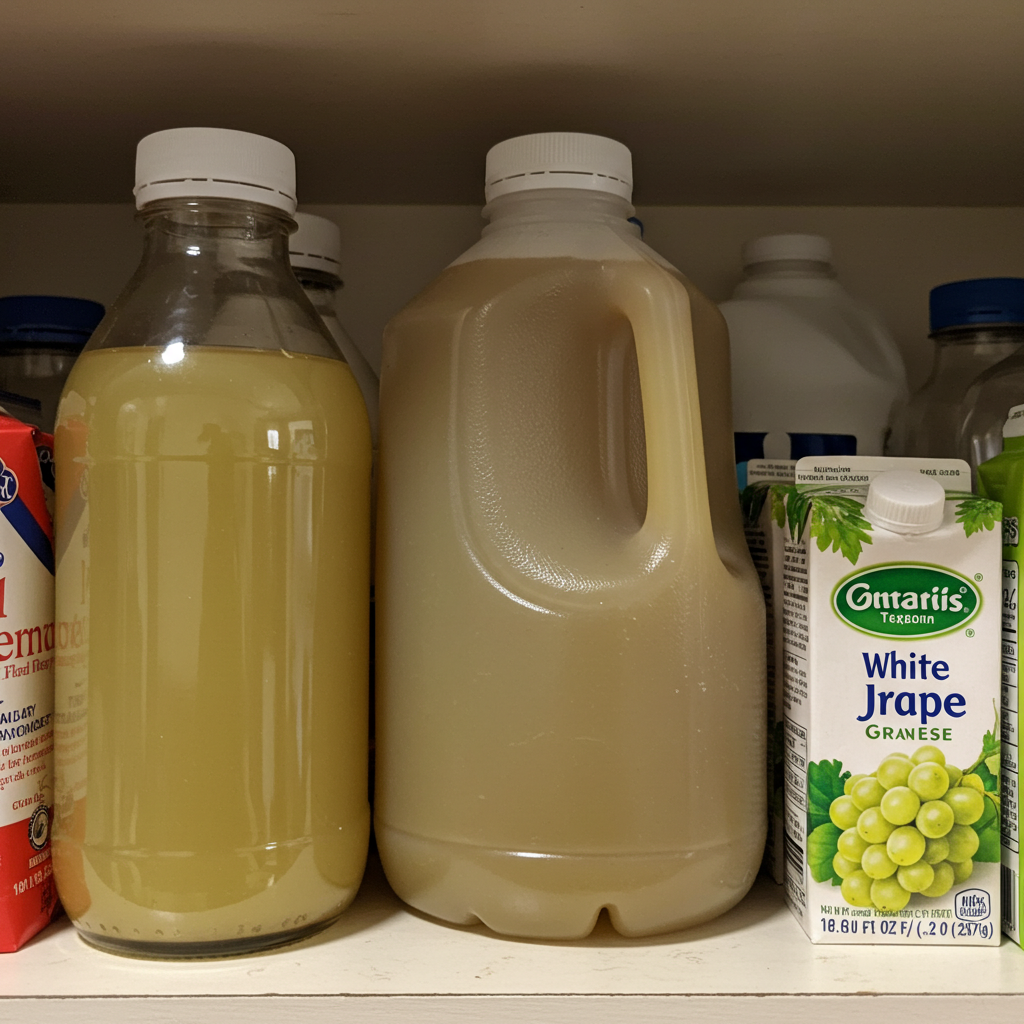
White grape juice lasts different amounts of time depending on how you store it:
- Unopened bottles and cartons: 12-18 months past production date
- Refrigerated, unopened: 2-3 months past “best by” date
- Opened, refrigerated: 7-10 days
- Frozen juice: 3-6 months
- Homemade fresh juice: 2-3 days refrigerated
Check for signs of spoilage before drinking stored juice. Throw it away if you notice an off smell, bubbling, or changes in color. When white grape juice spoils, it often develops a fermented smell similar to wine.
Single-serve juice boxes last longer than big containers because you open each one fresh. These small packages work well for lunchboxes or travel when you need portable juice options.
Most manufacturers put a “best by” date on the package. This date tells you when the juice tastes best, not when it becomes unsafe. Properly stored white grape juice often stays good well past this date.
Frequently Asked Questions
Is white grape juice good for you?
White grape juice offers several health benefits when you drink it in moderation. It contains natural antioxidants that fight harmful free radicals in your body. These compounds help reduce inflammation and support heart health.
The juice provides:
Natural plant compounds that support blood vessel function
Quick energy from fruit sugars
Vitamin C for immune support
Hydration with good flavor
A source of certain minerals like potassium
However, white grape juice also contains high amounts of natural sugar. One 8-ounce serving has about 36-40 grams of sugar, similar to soda. This high sugar content means you should drink it in small portions, especially if you watch your blood sugar or weight.
Most health experts recommend limiting juice to one small glass per day. Children should drink even smaller portions based on their age. The best approach treats white grape juice as an occasional drink rather than an everyday beverage.
What is the difference between grape juice and white grape juice?
White grape juice comes from green or white grape varieties like Thompson Seedless or Niagara grapes. Regular grape juice (purple or red) comes from dark-colored grapes like Concord.
The main differences include:
Color – white grape juice looks clear gold while purple grape juice has a deep color
Flavor – white tastes milder and sweeter; purple has a stronger, tangier taste
Antioxidant profile – each contains different types of beneficial compounds
Staining potential – white doesn’t stain like purple juice
Uses in cooking and mixing – white blends more easily with other flavors
Both juices contain similar amounts of calories and sugar. They both provide health benefits through different plant compounds. White grape juice contains more flavonols, while purple juice contains more anthocyanins.
Many people prefer white grape juice for its milder flavor and because it won’t stain clothes, carpets, or teeth like purple grape juice can.
Why drink white grape juice before surgery?
Doctors often recommend white grape juice before surgery because it counts as a clear liquid. Clear liquids move through your digestive system quickly and leave no residue that could cause problems during surgery.
White grape juice works well before medical procedures because:
It digests easily
It leaves no colored residue in your system
It provides quick energy through natural sugars
It helps maintain blood sugar levels during fasting
It prevents dehydration before surgery
Most surgery centers include white grape juice on their approved pre-surgery drink list. Patients typically get instructions to stop solid foods 8-12 hours before surgery but can drink clear liquids until about 2-4 hours before the procedure.
The sugar content in white grape juice helps prevent low blood sugar during the fasting period. This makes the surgery experience more comfortable and reduces certain risks.
Does Starbucks use white grape juice?
Yes, Starbucks uses white grape juice as an ingredient in many of their popular cold beverages. The company adds it to their Refreshers line and several fruit-based drinks.
Starbucks beverages that contain white grape juice include:
Strawberry Açaí Refreshers
Mango Dragonfruit Refreshers
Pink Drink and similar beverages
Various seasonal fruit-based drinks
Some of their juice blends
The coffee chain uses white grape juice to add sweetness and body to drinks without overpowering the main fruit flavors. Most customers don’t realize grape juice creates part of the flavor profile they enjoy in these popular drinks.
Starbucks chooses white grape juice because it blends well with other ingredients without changing the intended color of the final drink. The neutral flavor works especially well in their bright, colorful beverages.
Can you drink too much white grape juice?
Yes, you can drink too much white grape juice. The high sugar content makes it a beverage best enjoyed in small amounts.
Drinking excessive amounts of white grape juice might cause:
Blood sugar spikes
Unwanted weight gain
Dental issues from sugar exposure
Digestive discomfort or diarrhea
Reduced appetite for more nutritious foods
Health experts suggest limiting juice to one 8-ounce serving per day for adults. Children should drink even less based on their age and size. The American Academy of Pediatrics recommends no more than 4 ounces daily for young children.
The natural sugars in white grape juice add up quickly. A single cup contains nearly as much sugar as a can of soda. Even though the sugar comes from fruit, your body processes it similarly to other sugars.
Is white grape juice a natural laxative?
Yes, white grape juice works as a mild natural laxative for many people. The combination of fruit sugars, certain plant compounds, and natural acids gently stimulates digestive movement.
The laxative effect happens because:
The fruit sugars draw water into the intestines
Natural compounds stimulate gentle muscle contractions
The liquid adds hydration that softens stool
Certain acids may stimulate digestive juices
Many parents give small amounts of white grape juice to children with mild constipation. Pediatricians often recommend it as a gentle first step before trying medication.
For adults, drinking 4-8 ounces of white grape juice on an empty stomach sometimes helps relieve minor constipation. The effect varies from person to person, and some people notice stronger results than others.
While white grape juice can help with occasional constipation, you shouldn’t rely on it for chronic digestive issues. Talk to your doctor if you have ongoing digestive problems that don’t improve with simple measures.
Conclusion
White grape juice offers much more than just a refreshing beverage option. Throughout this guide, we’ve seen how this versatile liquid brings value to both your health routine and kitchen adventures.
The benefits of white grape juice include:
- A good source of natural vitamins and minerals
- Antioxidant properties that support overall health
- Heart-friendly compounds that promote circulation
- A naturally sweet flavor without artificial additives
- Versatility in both drinks and cooking applications
Remember that moderation matters most when adding white grape juice to your diet. The natural sugar content means you should limit your daily intake to about 4-8 ounces. This approach helps you gain the benefits without excess sugar consumption.
For the best quality, look for juices labeled “100% juice” with no added sweeteners. Organic options provide another choice for those wanting to avoid pesticide residues.
Making your own white grape juice at home gives you complete control over the ingredients. Though this takes more effort than buying bottled versions, many people enjoy the fresh taste and satisfaction of homemade juice.
Whether you drink white grape juice before a medical procedure, use it in your cooking, or simply enjoy a cold glass on a hot day, this beverage has earned its place in many households. Its light, sweet profile makes it especially popular with children and those who find red grape juice too strong.
Next time you’re in the grocery store, consider picking up some white grape juice to experience its benefits yourself. With so many potential uses—from marinades to desserts to simple refreshment—this versatile juice deserves a spot in your regular rotation of healthy beverages.
Start with a small glass with breakfast or use it in tonight’s dinner recipe. You might discover a new favorite ingredient that brings both flavor and health benefits to your table.
Discover New Recipes Every Day with TODA Recipes
At TODA Recipes, we’re passionate about sharing simple, flavorful dishes that make everyday cooking exciting. Whether you’re craving classic comfort food or want to try something new, we’ve got the perfect recipe for you.
Want to stay inspired and never miss a new dish? Follow us on Facebook where we post daily recipe ideas, kitchen hacks, and cooking videos to keep your meals fresh and fun. Join our growing community of food lovers and bring more creativity into your kitchen!
Explore our latest easy recipes and transform your mealtime with TODA Recipes today.


